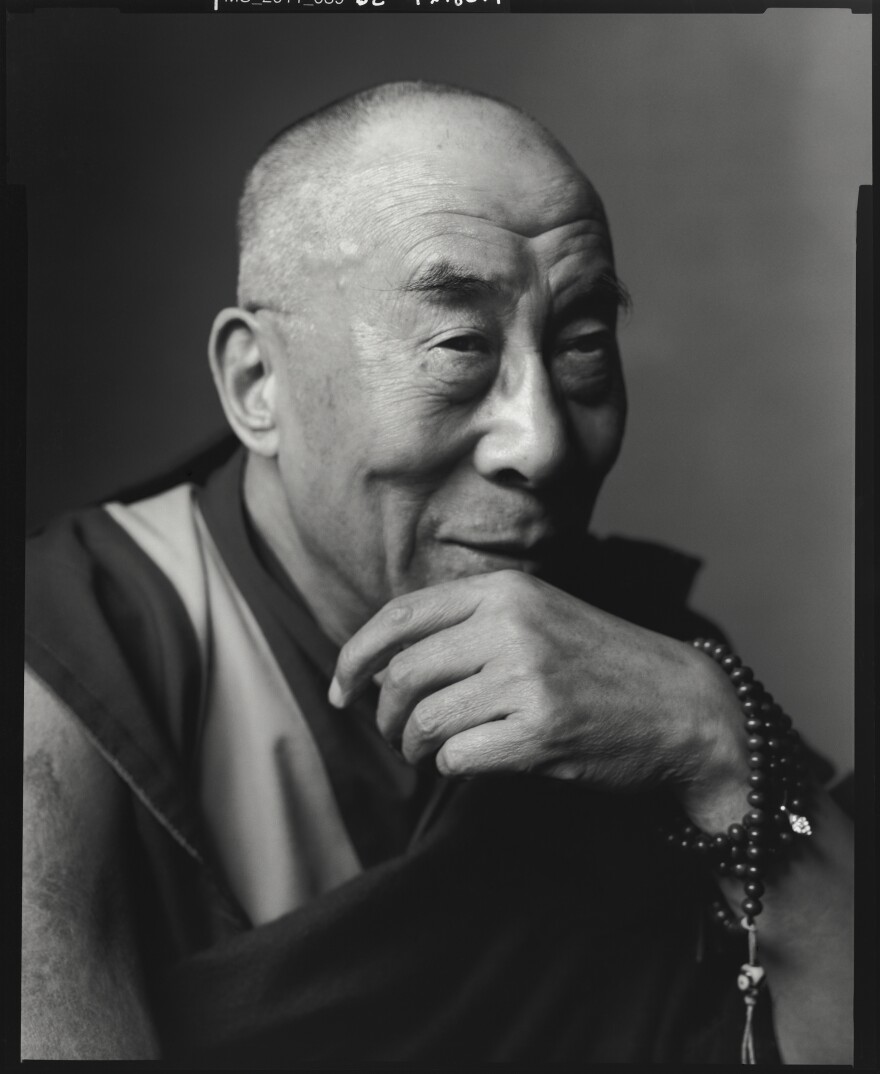For decades, Americans have seen celebrities through photographer Mark Seliger's lens. His work has appeared in magazines such as Vanity Fair, GQ and Rolling Stone.
"Having a sense of humor" is important to the work, he says. "Whether it's a big concept or whether it's a wink."
Seliger has dressed up Jerry Seinfeld as the Tin Man and photographed the back of Barack Obama's head. But he's prepared if celebrities aren't game for his portrait ideas. "I always have a backup plan ... " Seliger says. "At times, the simplest portrait is the hero — it's the one that works the best."
Now, a new coffee table book called Mark Seliger Photographs collects some of the best images from his last 30 years, including presidents, actors and rock stars.
Interview Highlights
On how his humorous ideas don't always work out
We wanted to paint the Red Hot Chili Peppers red and have smoke coming out of their mouths. And I was told by the band that that was not going to happen. But Flea [who's] one of the band members, very sympathetically decided that he would allow me to paint him half-way on his face. And I went ahead and did that and he looked at me and he said, "Yeah, we're not going to do this." ... It was a bad idea. ... I have to admit that I've had some real loser ideas, too.

On his session with the Dalai Lama
We set up a studio downstairs of the conference hall that he was speaking at. And in walked the Dalai Lama with some of the monks that were accompanying him. And they said, "Don't ask him to take his watch off, or his glasses." And that was the first thing that I asked him to take off. And he said, "Sure, why not?" I just looked over and there was some very upset monks. ...
I like the idea that it was reductive. I like the idea that it was very stripped down and that you really got a chance to see his eyes. ... It wasn't a long session. It was 10 minutes, so I really wanted to have the impact of, you know, the depth of him and the spiritual connection that he brings into the world and that felt like the best way to do it.

On how he fell in love with the darkroom first
I was really not drawn to photography to take pictures — I was actually really inspired through the darkroom. ... I made a darkroom in my parents' house when I was growing up. They would go out on a Saturday night and I would spend hours making prints. I just fell in love with the process. And as that love kind of grew, I had to have something to be able to print, so I thought: I better start taking pictures — and that's how it all evolved. I never really thought that I'd end up here.
On changes in technology
What digital photography has has done is it's allowed you to view things in real time so you have this very immediate sense of what you're doing. But what I really miss is that surprise of getting a contact sheet back, spending time on the photographs and trusting the editing process that happens naturally when you're working with a subject, where you're not looking at a screen, where you're seeing the image in your head.
There's a natural progression to the session where you can see the rise of the enthusiasm of the subject, or the intricacy of the subject, and then it winds down to the end of the session. And that, to me, gets a little bit lost when ... you're looking at a screen or there's a group of people standing by you looking at the screen and helping you make that decision. ... It's not as intuitive.
On having six minutes to make a portrait of former President Barack Obama — and deciding to photograph him from behind
I asked President Obama if it was OK if I did a diptych of him and he said, "Sure." And he walked up to the white background and we did the front version of him, and then I asked him to turn around, and we started to shoot the back of him. ...
And as I was giving him direction he goes, "Wait, is this going to make my ears look big?" And I said, "Absolutely not." And he goes, "All right, that's enough art, Mark." ...
What I love about doing portraits is that if you can get something that no one else has gotten and do something special then, you know, you've done your job. I love that kind of challenge: To go in there and create something that's never been done before.

Kat Lonsdorf and Jolie Myers produced and edited this interview for broadcast. Beth Novey adapted it for the Web.
Copyright 2023 NPR. To see more, visit https://www.npr.org.



